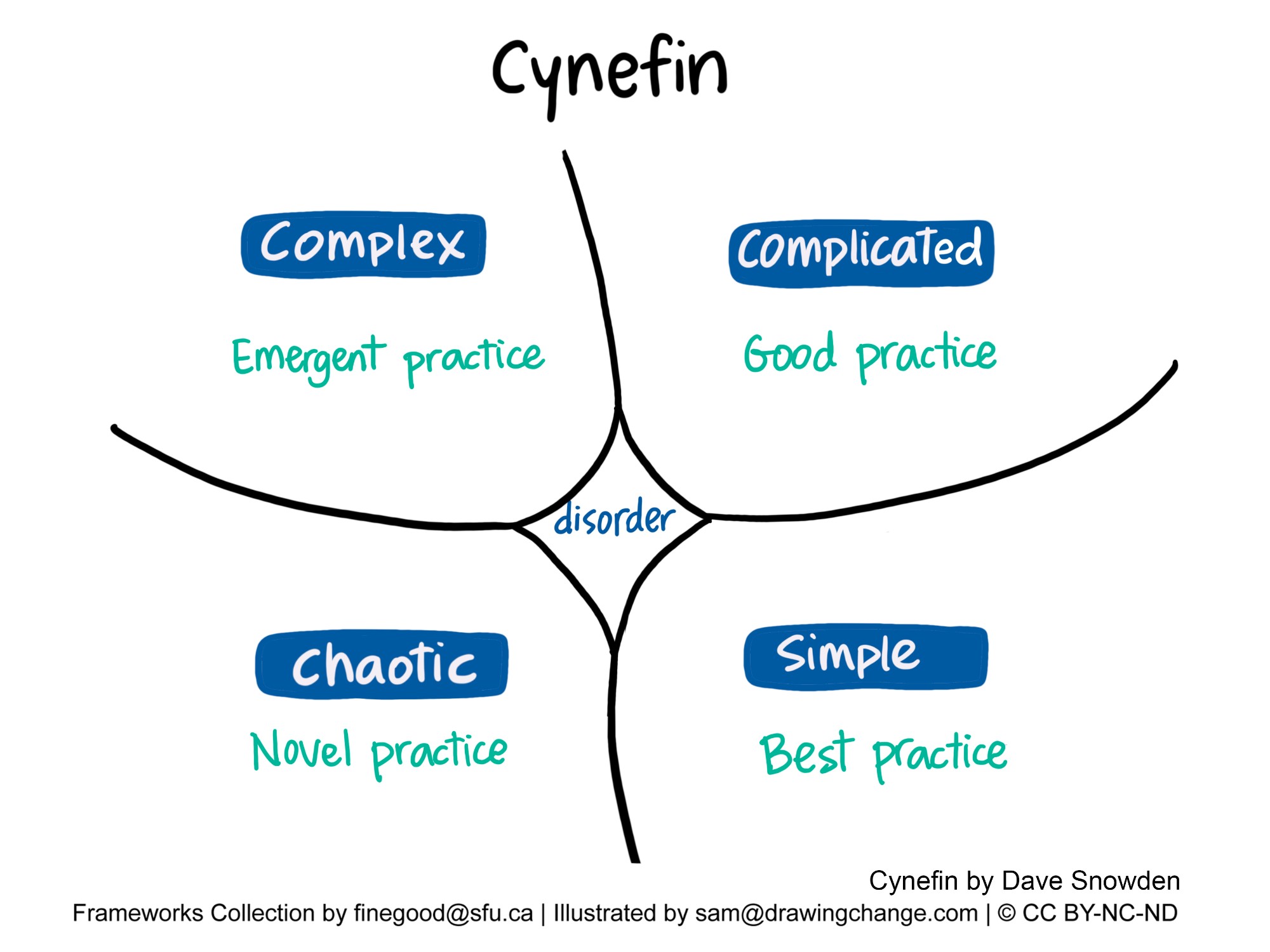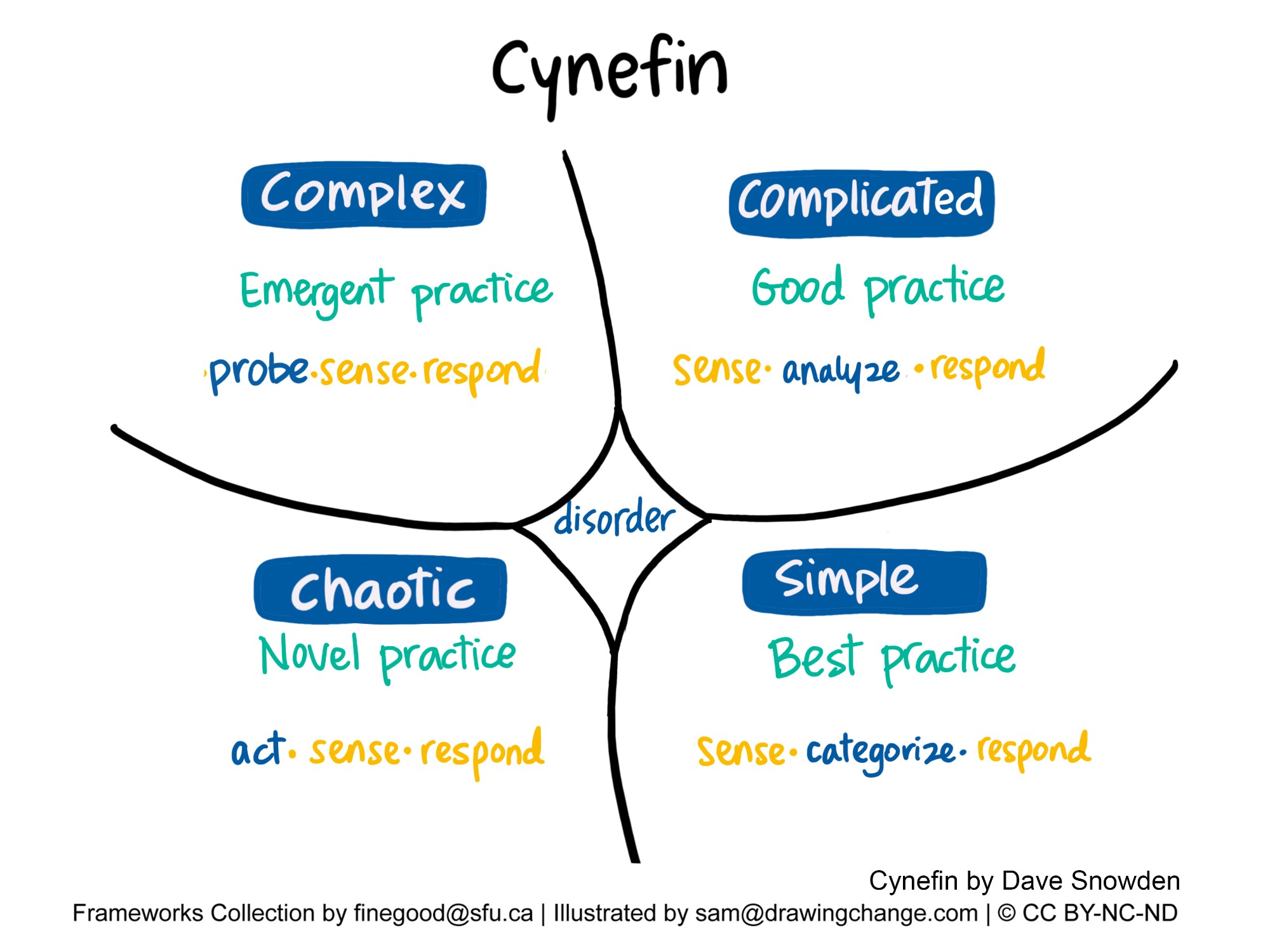- About
- Frameworks
- Frameworks Guide
- Complex Versus Complicated
- Unpacking Complexity
- Paradigm Shifts
- Strategies
- Help It Happen
- Outcome Creation
- Knowledge Cycle
- Collaboration Spectrum
- Collective Impact
- Process of Building Trust
- Two Loop Model
- Community of Practice
- Strength of Ties
- Feedback Loops
- Three Horizons
- Triple Loop Learning
- Fragile to Antifragile
- Match Capacity and Complexity
- Competition and Collaboration
- Applications
- Image Gallery
- Contact
Cynefin
The Cynefin framework, developed by Dave Snowden, is another conceptual model used to aid decision making. Like the Stacey Matrix it categorizes challenges into simple, complicated, complex, and chaotic. Rather than a focus on levels of certainty and agreement, Cynefin focuses on the relationship between cause an effect.
In simple contexts, the relationship between cause and effect is obvious allowing for a best practice to be described regardless of context. A cookbook is a collection of best practices. The user of the cookbook senses or asks what food their guests would like. Then they scan the table of contents for the category of food they would like to make and respond by picking the recipe they will use.
In complicated contexts, there may be a clear relationship between cause and effect, but discerning it requires expert analysis. As a result, complicated problems may have multiple right answers depending on the expert and their analytic approach. With multiple right answers, one can only define good practice, not best practice. When sending a rocket to the moon, many types of expertise must be integrated. Each expert senses the variables that are most important from their perspective, they analyze the situation through experimentation, and then together they respond by designing the rocket to send into space.
For complex problems, the relationship between cause and effect can only be determined in retrospect. In complex situations, the whole is more than the sum of the parts and the system may be in constant flux. Since cause and effect can only be determined with hindsight, practices cannot be "best" or "good"; they must be discovered through trial and error, experimentation, and study. In this way practice is emergent. Raising a child is a constant process of trial and error. Parents probe what might work with a specific child in a specific context. With each trial parents develop a sense of the practices they can use to try to effectively respond to each specific situation.
In a chaotic situation, the relationship between cause and effect is impossible to determine, so trying to figure it out is pointless. Leaders need to act immediately to establish order to shift the chaotic situation to one that is maybe only complex. Efforts to sense emerging patterns from different chaotic situations can help in the future when one needs to respond with another novel practice.



Deeper Dive
- Snowden, DJ and MA Boone. A Leader’s Framework for Decision Making. Harvard Business Review, 2007.
- Snowden, DJ. The Cynefin Framework. The Cognitive Edge, 2010.

